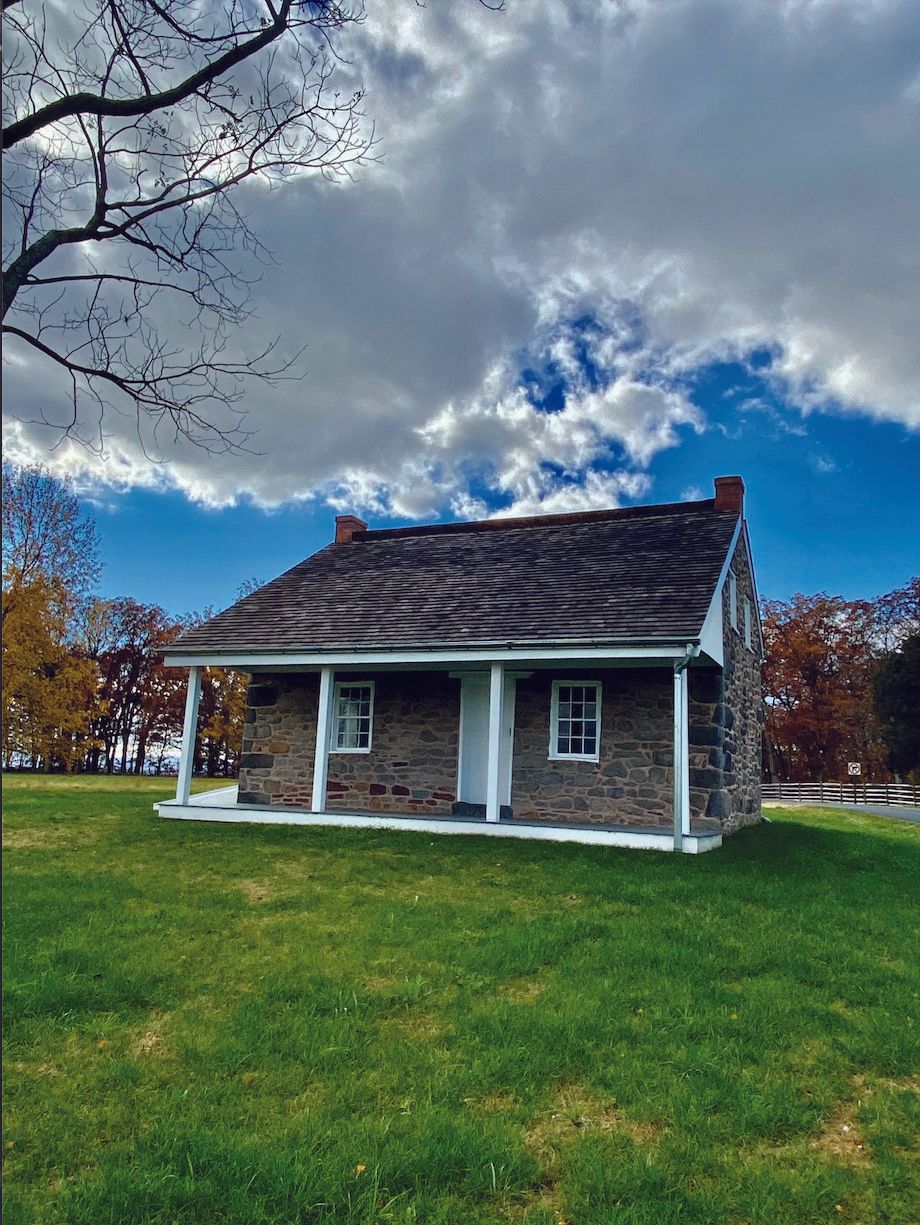The Warfield House
by Diana Loski
When traversing the Confederate line at Gettysburg, there is a small stone house located at the junction of Seminary and Warfield Ridges. It is found on the Millerstown Road south of town. The house, so diminutive that it appears non-consequential, was owned by a family that wisely fled during the terrible battle that took place around the property on July 2, 1863.
James Warfield, the man who gave the eponymous title to the ridge that bears his name, was born in 1822 in Maryland. It is probable that he was born into slavery – or at least his ancestral line came from that ignominious institution, but as a young adult he came to Pennsylvania with his wife, Elizabeth. Unable to read or write, James Warfield worked as a farmer and blacksmith. He and Eliza raised most of seven daughters and only son, James Jr., in that house on Warfield Ridge. He purchased the house in 1862, when he was forty years of age.
By the time of the Battle of Gettysburg the following year, the three eldest children, Lydia, Susan, and James, were adults; the five remaining daughters: Louisa, Martha, Mary, Alice and Sarah were still young and at home. James enlisted in the US Colored Troops, 30th Infantry in 1864, so it was likely that he was nearby helping his father with work on the farm when war came to the Borough of Gettysburg.
Like most citizens of minority status in Gettysburg in 1863, the Warfields quickly vacated their home when they learned of the impending approach of Lee’s Army of Northern Virginia. Rumors quickly circulated that the Confederates would capture black citizens and send them back to the South into slavery – and the Warfields were not going to wait and see if those rumors were true.
While they were away, the Confederate troops occupied the house and took whatever food and supplies they needed. The house was situated in the middle of battleground, and artillery from both sides pummeled the area. Infantry troops grappled on the property as well, as the Peach Orchard and Emmitsburg Road were within easy reach. The house was damaged, though the stone edifice survived the barrage of the conflict.
James Warfield sought for retribution of five hundred sixteen dollars in damages. Since the Confederates did most of the damages, he did not receive all he had requested. He was, however, rewarded four hundred and ten dollars. He was fortunate, as most applicants for Confederate damages received little or nothing.
The Warfields were undoubtedly proud of their only son, James Jr., who enlisted in the Union army in 1864 at the age of 21. He was severely wounded in the Crater at Petersburg, but survived.
James Warfield, Sr. died in 1876 at the age of 54. It appears that the cause of his death was pneumonia. The house was sold at his passing, and his neighbor Raphael Sherfy served as the executor of his estate.
For many years various owners resided in the home, altering it by adding a second story and making other adjustments to suit their individual purposes. In 2020, the National Park Service purchased the house and restored it to its 1863 appearance. It is once again the unassuming home of a family who lived for many years through strife and war, and managed to keep their family, and their livelihood, intact.
Today, the name for the historic ridge that abuts the property is consistent with the surname of the family who lived there. Such a quiet and bucolic situation belies the horrific vestiges of war, and its turning point here at Gettysburg, one family at a time.
Sources: The Warfield House, nps.gov/gett/warfield. James Warfield Family History: ancestry.com. U.S. Civil War Draft Records for James Warfield, nara.gov. Death Certificate for James Warfield, ancestry.com. Last Will and Testament of James Warfield, Adams County Historical Society.



